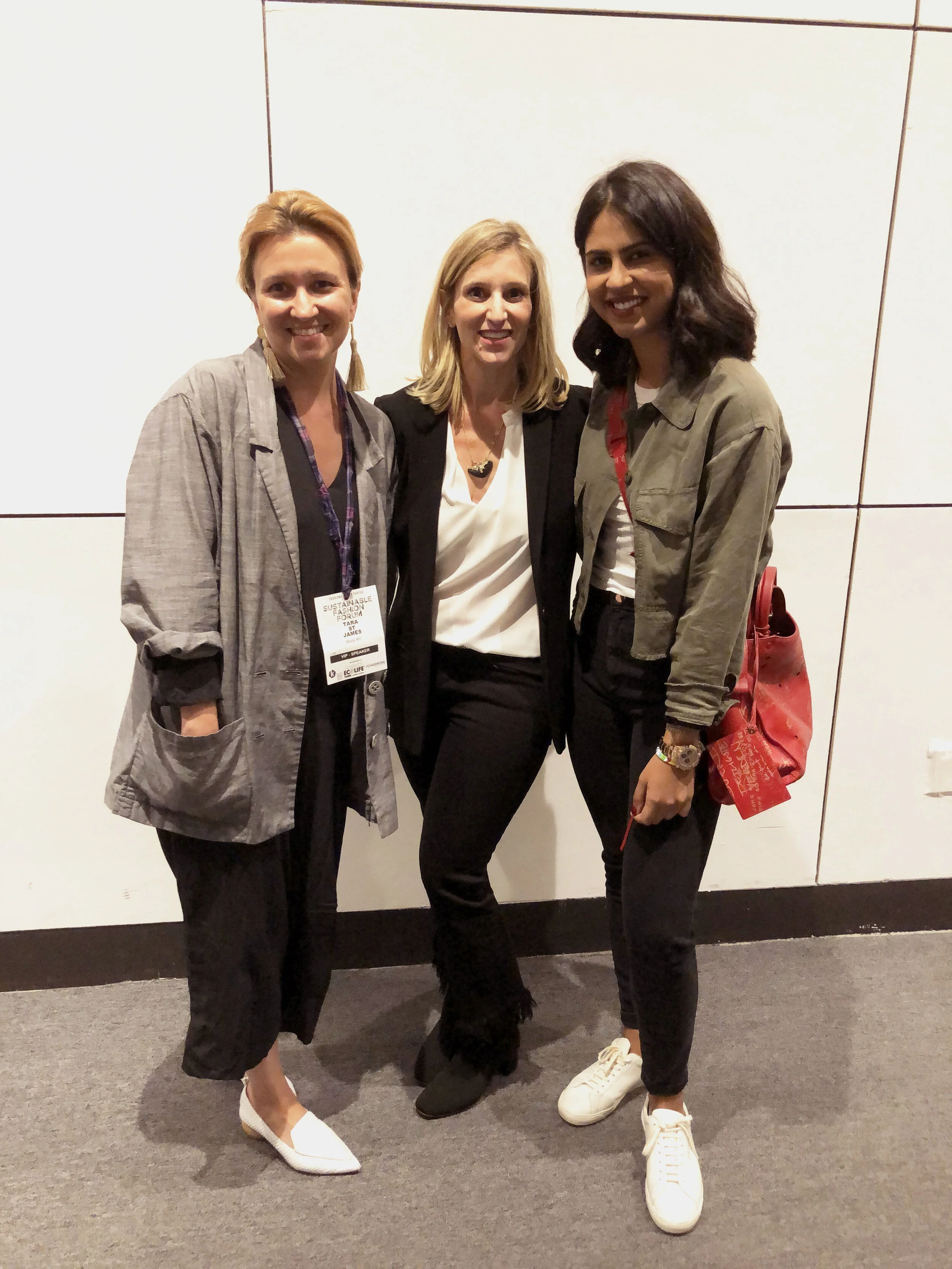5 Takeaways from Sustainable Fashion Forum at LA Textile
Daniella Platt is the founder of Looking Good YAYA! and spoke as a panelist recently at the Sustainable Fashion Forum during LA Textile, alongside Zahra Ahmed, CEO of DL1961 Denim and Tara St. James, Founder of Study NY and Re:Source 1.5.
Below is a summary of 5 key takeaways Daniella shared with us, for brands looking to flip the script and incorporate improved sustainability practices within fashion manufacturing.
1. Collective good.
“Rather than a few people doing 100% good, we need 100% of people doing a little bit of good”
- Tara St. James, Study NY + Re:Source1.5
2. create a denim brand that doesn't leave a negative impact.
Denim is iconic, yet it’s been known to have a dirty manufacturing process. According to DL1961, “The average pair of jeans uses approximately 1,500 gallons of water.” To create a denim brand that doesn’t leave a negative impact, Zahra Ahmed of DL1961 advised brands to be transparent about the process and to measure efforts toward change. Sustainability is a movement, and it will change tomorrow.
Be transparent on your process, measure your efforts, and choose influencers who align with your messaging, who will share your brand message appropriately with their audience.
3. Be disruptive: the Anti-Fashion Calendar
Tara St. James created the “anti-fashion calendar,” an alternative production methodology, after feeling the traditional cycle is too taxing on designers. She advised brands to be disruptive. It’s not necessary to follow the traditional calendar of manufacturing if it doesn’t make sense with your message or brand.
By going “off-calendar,” Tara increased her focus on design and allowed production of a collection to be underway, her way. This process limits waste, as you’re not forcing unnecessary production. Manufacturing during “downtimes” also proved to be a benefit, as factories were slower and they had the bandwidth and excitement to produce collections.
4. encourage your retail partners to work in sustainable ways with your brand and educate their customers.
DL1961 also requires its retail partners, such as Bloomingdale’s or Nordstrom, to adapt to work in the sustainable practices of the brand.
Have your retail partners speak to their customers about your efforts within sustainability. Keep asking and find your 'yes' from the partners!
5. Reduce, Reuse, Repurpose
How can you reduce material waste?
Marta Miller of Lefty Productions and David Prentice of OnPoint Manufacturing states that as materials rest on state-of-the-art cutters, such as Gerber, they are set to line up efficiently, generating nearly zero excess waste.
Mkrtchyan, who produces in LA, added that it’s important for a brand to know its identity, its buyers and strategies specific to *DTC (rather than wholesale).“Slow it down,” Miller added. “Make your relationship with your manufacturer into an intimate, partnered relationship.”
With on-demand clothing, shipping direct to consumer (DTC) in your brand packaging eliminates middle-men and waste. This works today, as small brands can emerge DTC, build a “tribe” on social media, and produce to their audience’s demand. The need for validation from a Nordstrom’s or Barney’s is no longer required.
*DTC - Direct to Consumer
LEARN MORe
Daniella Platt is the founder, communications and brand strategist for Looking Good YAYA!, a consultancy offering conceptual marketing ideas and actionable strategies. Previous clientele includes NYDJ, Wells Fargo, Becca and Texollini, Ed Hardy, and more. Follow Daniella at @lookinggoodyaya and www.lookinggoodyaya.com.
Produced by The Fashiondex, the Sustainable Fashion Forum is a one-day conference at LA Textile that focused on processes, practices and tangible ways in which fashion businesses can implement to become leaders in climate change, environmental sustainability, and ethical responsibility.
5 TAKEAWAYS BY DANIELLA PLATT
DANIELLA PLATT, ZAHRA AHMED, & TARA ST. JAMES
TARA ST. JAMES, DANIELLA PLATT, & ZAHRA AHMED



